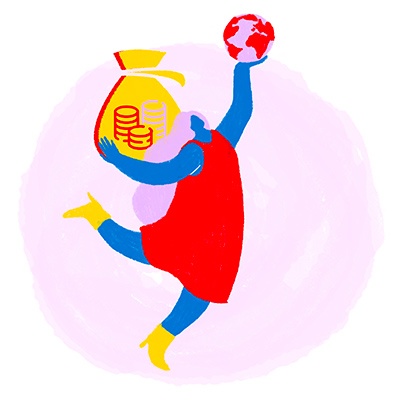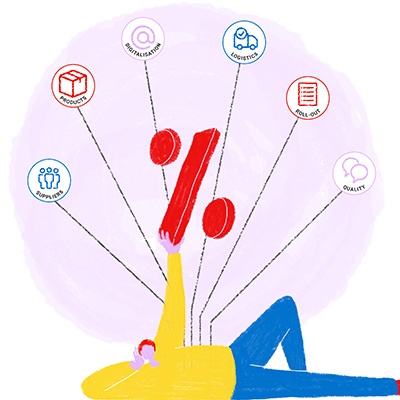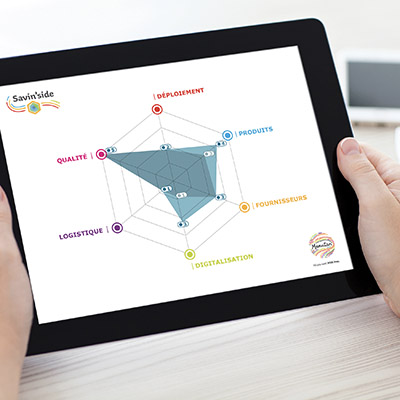Digital is transforming the Procurement function in depth. In the field of indirect purchasing, for example, the benefits of digital are numerous:
- Access to an unlimited range of products and services from a single purchasing tool
- Automation of transactions for greater reliability and simplicity
- Traceability and transparency across the entire procurement process
- The ability to delegate purchasing to users while keeping control (workflow system)
- Organisation of bids
- … and the list goes on
Thanks to a wealth of experience with our customers, we are well-placed to measure the power of digital, but we also know that it is still underutilised in the B2B market.
New players are emerging
Attracted by this gigantic market, "digital native" players are now coming to the fore, promising a new revolution. Just imagine: no longer any need to select a particular offer, since everything in existence is accessible. No need to negotiate prices: they are already the best. No need to persuade users to go through the group solution, as everything has become so simple and, of course, no need to work with the IT department: the connections are already open.
Following the same logic, you might wonder whether in a few years time there will be any need for a Procurement function at all! After all, couldn't it be replaced by a voice assistant hooked up to a huge platform of products and services, where everything is automated and "algorithmic"?
That is what some people dream of, but the reality will – hopefully – be different.
Significant differences between B2C and B2B
This latest "revolution" reminds me of the one at the start of the 2000s, when big digital platforms were going to sweep away conventional retailers. They were growing like mushrooms in every field. And 15 years down the road? They have almost all disappeared or been transformed into technological tools.
Of course, history doesn’t repeat itself and 2018 is no different when it comes to digital maturity. All the same, it seems to me that these new players are once again overlooking fundamental aspects of the Procurement function, and confusing B2B with B2C.
For a company, procurement is not an end in itself. It is not only about procuring the desired product at the best price – as when an individual makes a purchase – it is about enabling a whole chain of activities in which product and service have to satisfy several criteria.
The quest for quality
Having an online offering of hundreds of thousands of protective gloves sold by thousands of vendors from around world may be very handy, but you still have to ensure that none of them are counterfeit. A single faulty protective glove can put an employee’s life in danger.
Factoring in the total cost of ownership
Buying B2B also means securing supplies through a rigorous selection of vendors. How can you be sure that Vendor A in a particular market will maintain long-term, or even medium-term, support for the ranges sold, or that Vendor B will still be around in a few months’ time? In many cases, the real cost of a purchase is not just the price of the product; it encompasses the entire procurement process right through to billing. Can there really be any meaningful rationalisation if you receive as many invoices as you have suppliers, or if you are constantly handling the reception of incoming products because there are as many deliveries as there are sellers in your market?
Rolling the agreement out across all of the company sites
Finally, buyers are well aware that the hardest part is not so much signing an agreement as making sure it is actually used by internal customers. What’s the point of providing them with an attractive website when you know that, in many companies, over half of all purchases (by volume) still involve unlisted suppliers!
I could cite a whole host of other examples to demonstrate that digital solutions cannot really be used optimally without an approach carefully designed by a buyer and the buyer’s partners… In short, technology is embedded in human relations!
The human at the heart of digitisation
You have to see people face to face in order to get to know them and select the right suppliers who can guarantee conformity, quality and security. You have to talk to them in order to optimise deliveries and processes. Sit round the same table with them regularly to work out a really effective rollout plan and identify solutions for every identified sticking point. Analyse the different costs of every step in the process together in order to see how to optimize them. Think up new services that make users’ everyday lives easier and reduce the company’s environmental footprint.
In brief: procurement performance relies on lots of steps that can't be digitised!
In summary, the issue goes beyond the field of procurement, and raises the question of what sort of partners we want to work with. Do we choose to work with players who put human relationships at the heart of their offering and use digital as a powerful lever for efficiency, or with companies that put digital at the heart of the relationship and the human on the periphery?









